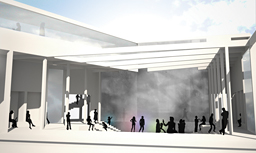
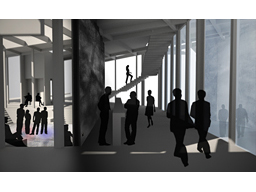
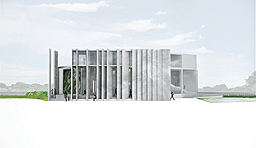
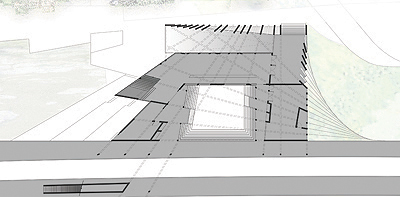
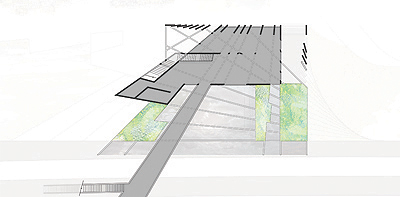
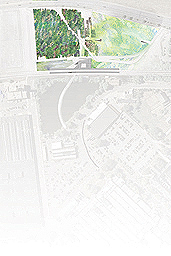
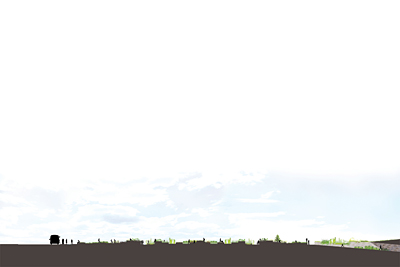
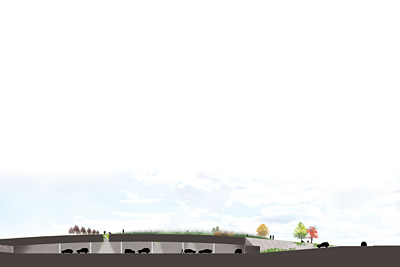
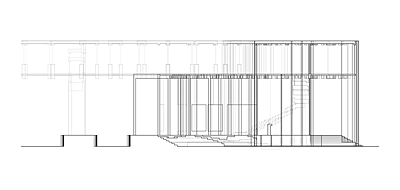
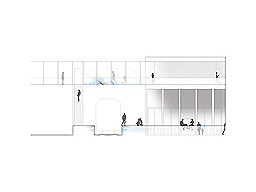
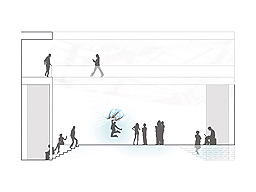
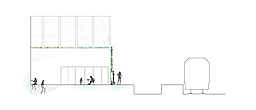
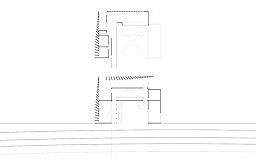
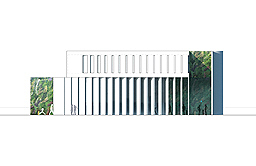
Lindsay Cooper
A transit station inherently embodies a sense of greater connectedness, making large distances seem smaller. Yet typical public space and typical waiting areas are not conducive to an increased degree of connectedness between the people that inhabit that space or between those people and their environment. This project hopes to foster an alternative to the drudge and social disengagement through considerations of materiality and the organization of space. The design intent is to create a neutral yet enticing space capable of varying degrees of interaction. Edward Hall's research into personal distances in The Hidden Dimension speaks about how we interact with each other, and how these distances may affect the way space is measured. By organizing space through the application of key elements within A Pattern Language the design for the Dearborn Intermodal Station was able to allow for varying degrees of human interaction. Through the use of light transmitting concrete, a radiating pattern of columns, and a C-shaped court configuration, the distinction between what would be considered exterior and interior space is blurred, allowing for more integrated views and a sensibility of expansiveness. The transitory inhabitant is then invited to interact with others, play with the array of light and shadows on the central wall and front columns, or cache themselves away and look on, all forgetting to wait.